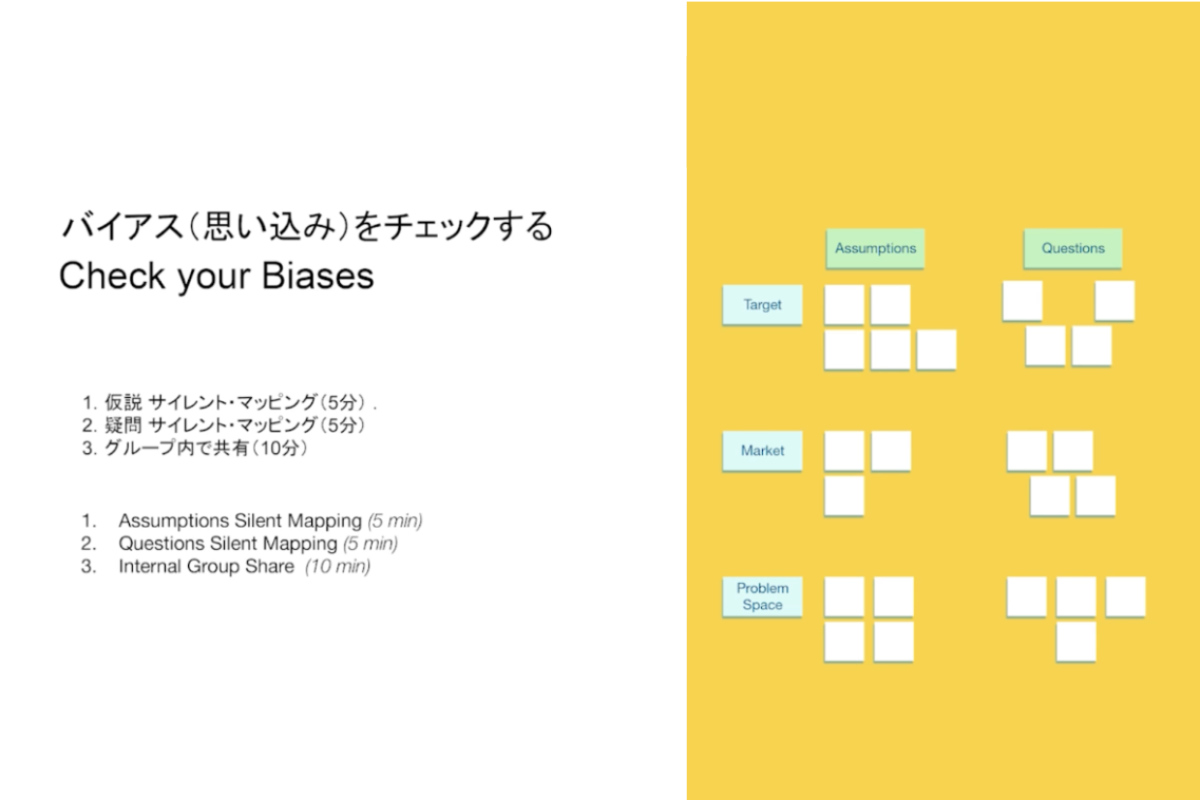Problem definition is the first step in creating a business. At Moon Creative Lab, we emphasize the importance of first delving into problem definitions from multiple angles. In the business incubation process, it is only after a problem is defined that a vision or concept can be created.
In this article, we introduce essential tips that can be applied to problem definition and user-research preparation.
Table of Contents
- Four essential tips in problem definition
- Tennis Bear as an example
- Necessary rules in brainstorming
- How to check your bias
- Preparation for user research
Four essential tips in problem definition
Defining a problem is the first step needed before creating a project vision or concept. It is necessary to consider various factors such as what are the users' problems, who are the people in need and whether there are competitors.
There are four points we analyze at Moon to help us define the problem we are looking to solve.
① Pain Points + Aspirations
To make problem definitions more concrete, we need to know the challenges people are facing. We try to identify the problem by answering the following questions:
What needs currently exist?
What are the unfulfilled needs?
Are there any needs that people aren't aware of?
② Problem Scale + Opportunity
Analyzing the problem with statistics and other data can help better understand the scale and severity of needs. The results of further investigation can help provide hints for identifying solutions. If there is no data found, we can conduct simple research such as interviews to help identify the specific solutions needed.
③ User Exploration
Identify ideas that could have potential solutions and start thinking about the end users.
Identifying both the users and related stakeholders can help better understand the overall structure of the business. It is important to identify all stakeholders as clearly as possible and visualize them on a map.
④ Can We Test?
We need to understand the current market and user behavior, confirm how they are currently dealing with problems, what competitive services are available, whether they can be solved with existing services, etc., and examine whether new solutions are needed.
Tennis Bear as an example

Let's look at Tennis Bear which is part of Moon's venture portfolio. Tennis Bear is a digital sports platform that brings recreational players together in Japan that allows users to search and make reservations at local tennis courts. Tennis Bear also allows users to search for players of the similar level as themselves.
Below we apply the four essential tips in problem definition for Tennis Bear.
① Pain Points + Aspiration.
Before there was no way to check court availability online. Finding players at a similar skill level was a struggle among tennis players and these factors became important insights in finding what was needed as a service.
② Problem Scale + Opportunity.
The team identified the size of the tennis population, the number of courts, how many players are having troubles finding other players and how serious it is for users who love tennis.
③ User Exploration.
The Tennis Bear team examined various user scenarios such as experienced or inexperienced players, whether they play at a tennis club or whether they are tennis court owners or instructors.
④ Can We Test?
Tennis Bear searched for an online website that allowed users to check courts’ reservation status. What they found was that there was no service to make a reservation by searching for the availability of tennis courts. Based on this finding the team developed a function that allows users to search and reserve courts all at once.
After the service was launched, Tennis Bear realized users were having a hard time finding training partners of a similar level. The team then added a function that allowed users to search for players of a similar level.

Necessary rules in brainstorming
Quantity Over Quality
Before starting a discussion on your initial problem space, realize this is just the starting point. A single idea often leads to many more ideas in a brainstorming session. The best brainstorming sessions thrive when they are open discussions valuing any and all ideas, and opinions. Remember that quantity is encouraged over quality here!
Don't Judge Ideas Right Away
You might want to judge some of the ideas shared right away which is natural. It's important to have an open mind and consider various possibilities without jumping to conclusions.
Steps for a successful brainstorming session.
- At first, try to come up with ideas by yourself
- Share and discuss ideas with others
- Group similar ideas together
- Vote and pick ideas to prioritize
Prioritization can be discussed and decided over time but voting is more effective especially when time is limited.
After identifying your problem definition and running a proper brainstorm you'll next need to identify any biases.
How to check your bias
Doing a bias check after sharing honest opinions during a brainstorm session is important to make sure you have seen all perspectives of an idea (not just your own).
After the brainstorming session you'll want to separate the hypotheses from the questions. Hypotheses are statements that seem to be true about the ideas where as questions ask whether there is prejudice or risk against that hypothesis.

By analyzing the hypotheses and questions you are able to identify speculation and potential risks. Often times if you are unsure about a hypothesis you will need to consider more research or asking an expert.
Research Preparation

After narrowing our focus through the bias check process the next step is preparing for research.
There are two items that are required in order to proceed: a strong vision and a game plan.
Clarifying the vision plays a big role in deepening the shared goal and solutions among project members. Think about what needs to be shared to properly communicate your idea to others. Some questions you might ask include:
What kind of influence would this create on people, and on whom?
What kind of world do you want to create?
What is the motivation?
What are the barriers?
Next, you'll want to develop a game plan which outlines the research plan and concept design. Start by identifying these questions:
Who should we talk to?
What are the risks?
How serious is each risk?
Based on the content identified through the brainstorming, we can easily answer these questions with confidence to create a shared vision among team members and develop a game plan.
Next steps after Problem Definition
Moon's incubation process moves from problem definition is just the first step to building a business idea. The next steps include clarification of vision, concept design, user research, prototyping, and product launch.
This process is based on the design research methodology. Be sure to learn about the next steps here on Moon Stories!
Share on
Related stories

Moon Venture Variloom Is an Honoree in the Fast Company 2025 Innovation by Design Awards!
Congratulations to Variloom for being named an Honoree in Fast Company's Innovation by Design Awards!

Carrium Releases New AI-Powered Feature, “AI Career Designer”
Leveraging over 1 million data points to provide personalized career support service.

Exploring the Moon Way: An Award-Winning Case Study on Transforming Corporate Innovation and Culture
Congratulations to IMD and the authors of this thoughtful and illuminating case study!